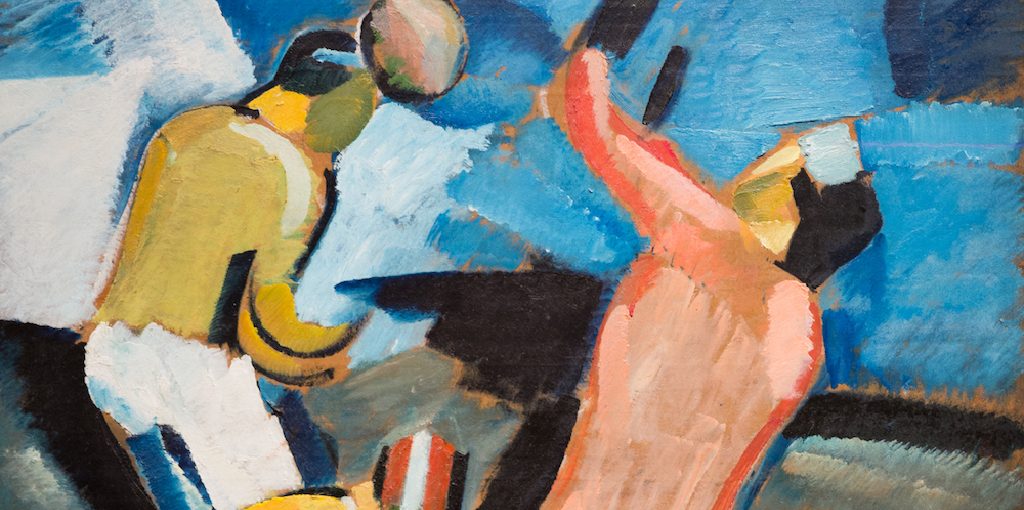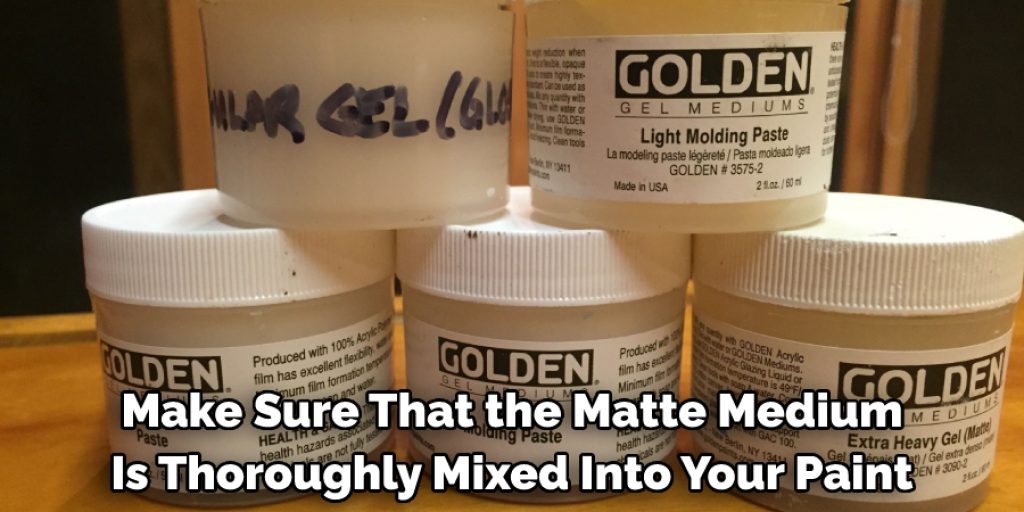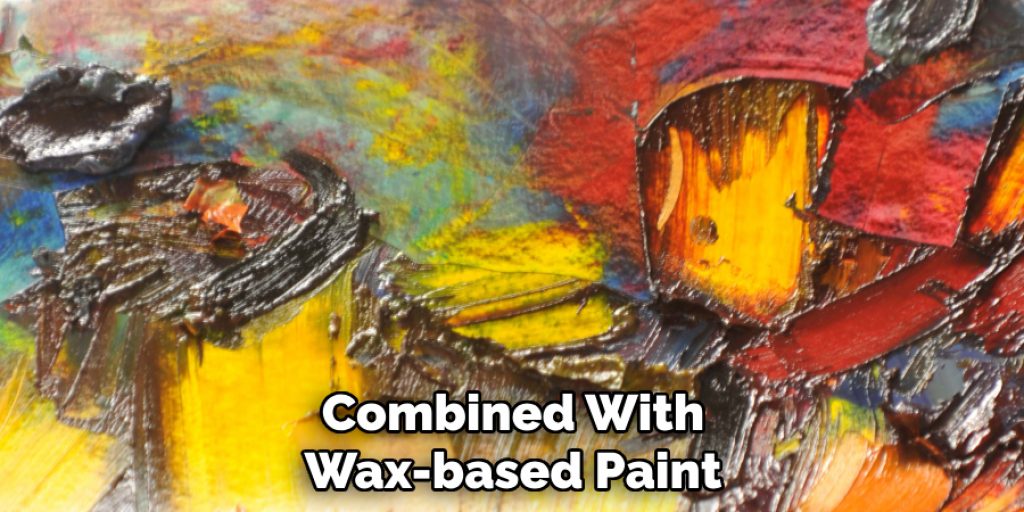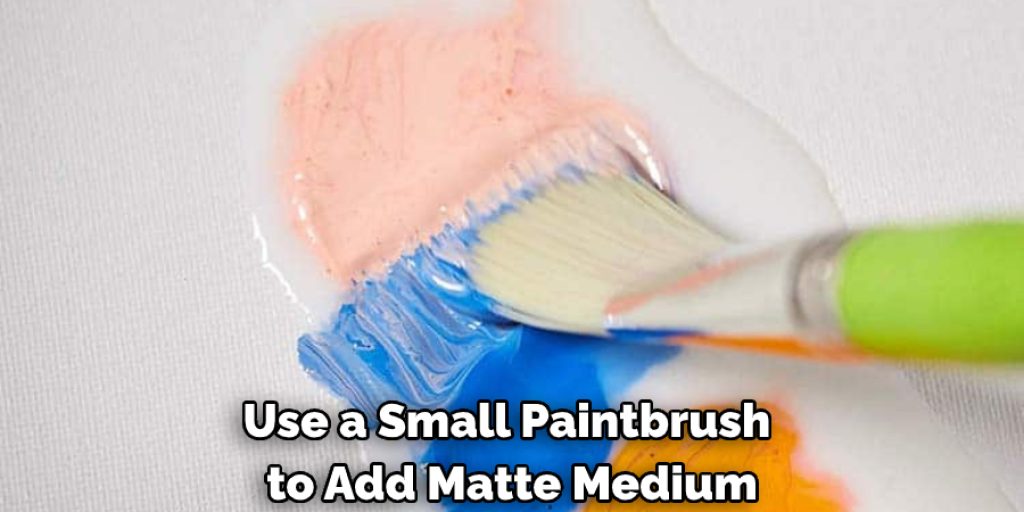How to Use Matte Medium With Acrylic Paint
Matte medium is a versatile acrylic painting medium that can be used to create less shiny surfaces, add texture, and extend the drying time of your paint. This blog post will teach you how to use a matte medium with acrylic paint for various techniques. Many artists use acrylic paint to create works of art.
One common issue is how the paints dry quickly and do not allow for much time for other layers to be added. The matte medium can help solve this problem by slowing down the drying process, allowing you more time to experiment with different techniques. This article will examine how the matte medium can be combined with acrylic paint to enrich your painting experience.

10 Reasons Why Use Matte Medium With Acrylic Paint:
1. Matte Medium enhances the flow and control of acrylic paint.
2. It helps to smooth out texture that is too rough or grainy.
3. Matte Medium prolongs drying time, preventing paint from drying up in the tube too quickly.
4. It can make a paint mixture easier to clean up because it softens the edge of a line between colors.
5. It helps to prevent cracking and warping when working with thick layers of paint.
6. When used in a painting, it reduces the appearance of brush strokes by increasing flexibility in a painted surface.
7. It can reduce or eliminate bubbles in acrylic paint caused by trapped air.
8. It prevents the formation of skin over the surface while painting.
9. It slows down drying time for paint, allowing you to build up paint layers gradually and blend while painting instead of after the fact.
10. Matte Medium can be used as a varnish when mixed with acrylic paints or mediums.
10 Creative Ways on How to Use Matte Medium With Acrylic Paint:

Matte medium is a must for acrylic artists. You can incorporate an additive into your paint to increase the finished piece’s matte or flat quality. Of course, the more you add, the flatter it becomes.
This isn’t just for use with dark colors either. You’ll be amazed at how much this little magical bottle of additive will add to lighter colors. Just substitute a little matte medium in place of some water when you’re mixing up your paint and see what happens!
Some ways to use a matte medium with acrylic paint:
- Add a small amount of light colors to create a more muted effect.
- Substitute matte medium for water when mixing paint to create a thicker, more textured paint.
- Use it as a medium to mix other media into your painting, such as pastels or charcoal.
- Experiment with adding it to different colors to see what interesting effects you can create.
1) Use Light Colors:
You can use the matte medium in various ways, even with light colors. For example, watering down your color and stirring in just a few drops of the matte medium can create a nice, flat base color for underpainting.
It can also be used as a sort of “primer” to give the paint something to stick to and prevent it from changing its appearance on different surfaces. You’ll probably notice that most of these materials are available at art supply stores like Jerry’s Artarama.

2) Add It at the End:
Once you’ve achieved the finish that you want with your color, you can further change its appearance by adding matte medium to some or all of it. You’ll get a flat finish with each additional drop you add. This can be used to tone down glossy paints, like greens, or to get an even more chalky look than flat paint alone.
3) Use It to Create Texture:
You can also use the matte medium in various ways to create texture on your canvas. For example, mixing in the sand, small rocks, or other objects can create a three-dimensional appearance.
However, if you decide to mix it in, ensure the matte medium is thoroughly mixed into your paint before adding anything else. Once you’ve added your additives, it’s important to let the mixture sit for several hours or even overnight before you work with it again.
4) Make Your Crayons:
Matte medium, combined with wax-based paint, can be made into your homemade crayons. These are great for kids since they are safe and non-toxic. The matte medium binds everything together. You need to make sure that you let it dry completely before using it on any surface other than paper, though.
Ceramic or glass pots make wonderful candle holders. One, they’re waterproof and heatproof. Two, they look really good too! They’re pretty easy to clean and are suitable for candle making. Just take care not to let them overheat as you pour hot wax into them.

5) Use It as a Sealer:
Once you’ve finished your painting and everything has dried, you can use the matte medium as a sealer to further enhance its flat appearance. You can even paint on a thin layer after everything else is dry to protect your piece from abrasion and dust during storage and enhance the flat finish.
This is a good idea if you have any areas in your painting that you don’t want people putting their hands on, such as a gift for someone.
6) Glaze It:
Matte medium is beneficial when glazing. It can be used in water with any glazing medium to create a glaze that dries very flat. This is especially nice if you want to glaze over your work with several thin layers to create an exceptionally smooth finish.
7) Keep It, Matte:
Using the matte medium can also help you keep your paint from becoming shiny as it dries. If you’ve ever worked with acrylics, you know that almost all of them are somewhat shiny as they dry.
However, adding matte medium to your paint at the same ratio that you would water will reduce the sheen and create a nice flat finish. If this isn’t working for some reason or you want to enhance your piece’s shine instead, you can also use the glazing medium to create a shiny appearance.

8) Create Texture:
Matte medium is also beneficial when creating textures on canvas. The matte medium can work great if you’re using extremely thick paint, such as those used for oil paintings or something similar, and want to create some texture with it.
Just add a few drops to your paint and mix it in thoroughly until you have the desired consistency. Matte medium works like any other kind of media; you can use it to create textures, glazes, or any other technique that you would normally use paint for.
9) Use It With Oil Paints:
If you’re using acrylics but want to try out oil paints, the matte medium can also be used with them. You can either use it instead of water when mixing up a lighter color or use it with oil paints to clean your work. Just mix the matte medium in until you have the look that you want, and make sure to let the mixture sit for several hours or even overnight before working with it again.
Now you know better what to do with that matte medium and why it’s important for your artwork. It can be used for many things, from mixing colors to cleaning brushes to putting the final touches on your finished painting.
10) Lighten Up:
If there are certain areas of your painting where you would like some parts to be lighter or darker but don’t want to repaint them, you can add a few drops of matte medium to the paint in those areas. This will have an effect similar to adding water and lightening the color.
Adding more matte medium will result in a darker tone while adding less will result in a lighter one. Matte medium is especially good for this because it doesn’t have any shine to it and won’t change the color of your paint.
Some Tips and Suggestions:

1. Matte medium can also be used as glue to affix objects, such as rhinestones or other embellishments, to your paintings. It dries clear and is permanent.
2. Decorating the raised surfaces of your painting with the matte medium before applying any glitter will help keep it from falling off.
3. Be sure to use matte medium, not gloss. Gloss is shiny and may alter the original appearance of your painting.
4. Try watered-down acrylic paint instead if you do not want to mix your regular acrylic paints with matte medium.
5. When applying glitters or other embellishments, use matte medium first and dry it thoroughly before adding the glitter. So the base coat is somewhat hardened before getting painted on top of it. Otherwise, they will rub off when you touch them.
6. Use a small paintbrush to add matte medium beneath rhinestones and other embellishments so that they will adhere to your painting more securely.
7. Under high humidity or heat conditions, the matte medium may darken slightly if used alone without adding paint. If this happens, adding a few drops of white coloring to the medium and mixing well will restore its clear appearance.
Conclusion:
As you can see, matte medium is a versatile product that can be used in myriad ways with acrylic paints. Hopefully, this has helped to demonstrate the many different applications for this easy-to-use paint additive! Remember, when using matte medium, it’s important not to overdo it; just add small amounts at a time and stir well before applying them to your painting surface.
Experimenting with new techniques is an excellent way of expanding one’s artistic horizons. We hope you have learned enough about using a matte medium with acrylic paint, and that the knowledge has inspired you to create new projects. If not, then don’t worry! You can always return to this blog for more information on using other media types in your artwork. Have fun creating art!




